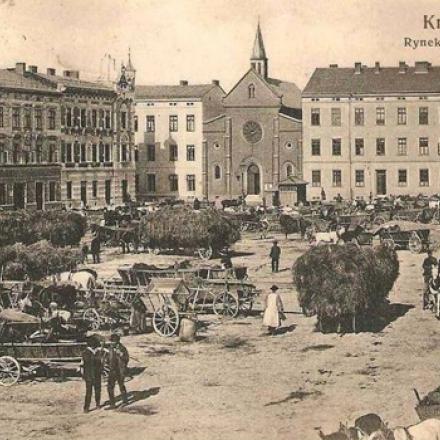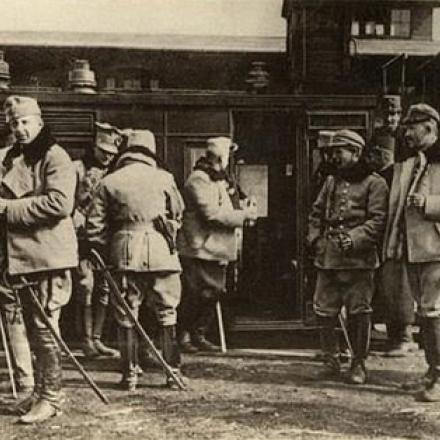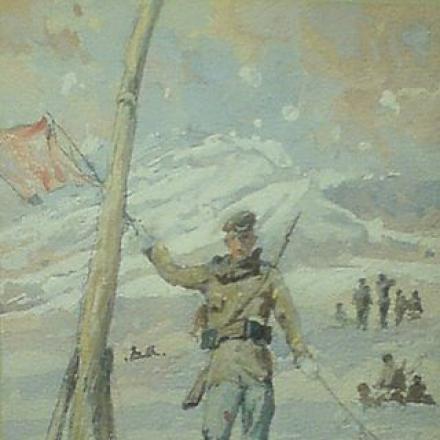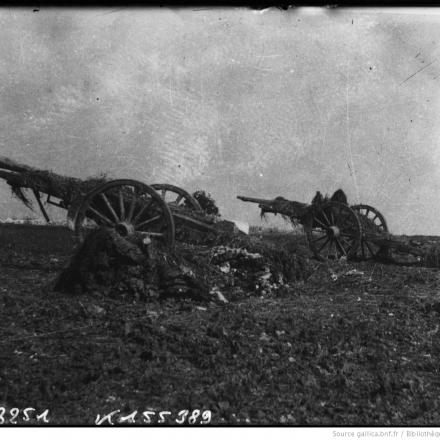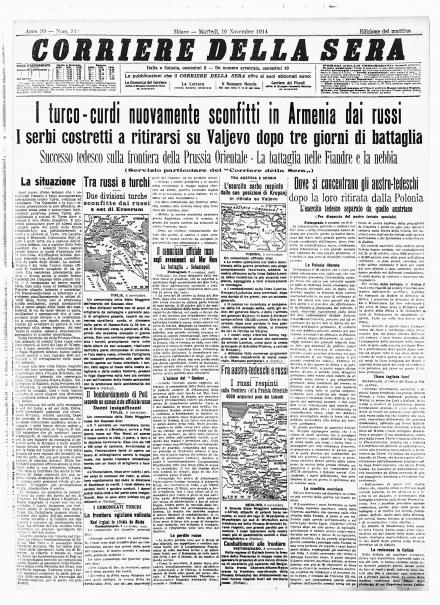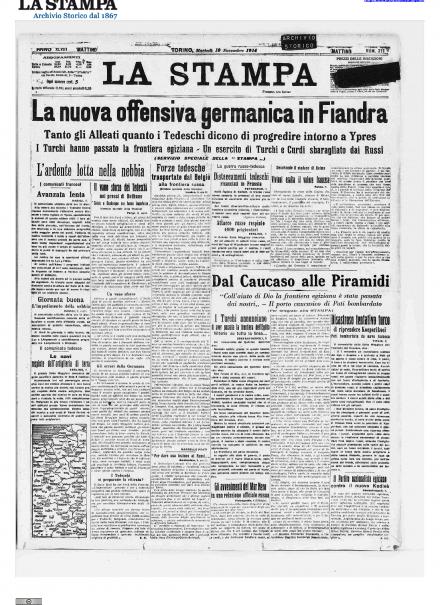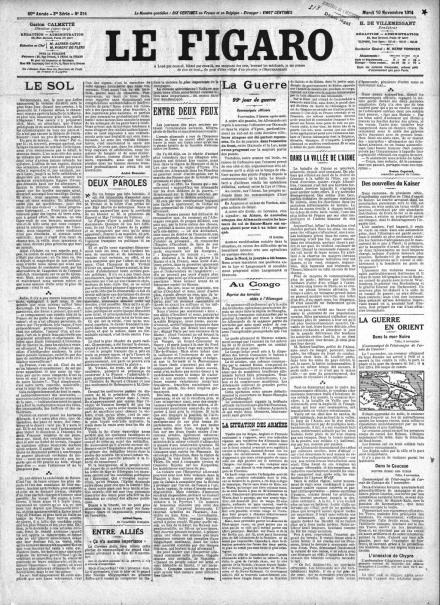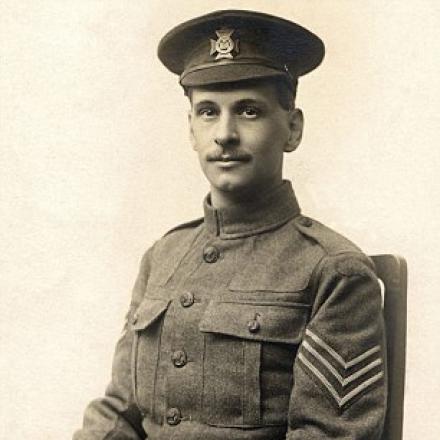Pietrogrado sorride
Gran colpo dei tedeschi, ce l’hanno fatta: dopo un’interminabile serie di assalti, la guarnigione Alleata di Diksmuide si arrende. Non sarà Calais, ma resta un buon inizio. E a sud di Ypres la Germania mette le mani su Sint-Elooi.
Le cose vanno meno bene sul fronte orientale: Berlino riesce a rallentare l’avanzata russa in Slesia aumentando la pressione su Lodz, ma in Prussia le armate zariste riconquistano anche Goldap. Ormai si è tornati a combattere in pieno territorio tedesco.
A Pietrogrado si sorride parecchio: è iniziato il secondo assedio di Przemysl, nuovamente isolata dal resto delle truppe asburgiche. I russi avanzano lungo tutto il fronte, ormai sono quasi arrivati a Cracovia; gli austro-ungarici indietreggiano.
I serbi lamentano connivenze turco-bulgare con alcuni “Comitadjis”, bande locali, perlopiù con rivendicazioni nazionalistiche. Sarebbero stati rinvenuti documenti e lettere a conferma di questa tesi. Niente di straordinario, i Balcani son sempre stati una regione “difficile”. Gli interessi di Bulgaria e Impero ottomano sono ovvi, Sofia e Costantinopoli hanno solo da guadagnare dalle difficoltà serbe.
Davide Sartori
GLI AVVENIMENTI
Fronte occidentale
- Yser: i tedeschi, dopo furiosi attacchi, obbligano alla resa la guarnigione di Diksmuide.
- Ypres: i tedeschi conquistano Sint-Elooi in Belgio.
Fronte orientale
- Prussia orientale: i russi rientrano a Goldap.
- Przemysl nuovamente isolata dalle forze russe. Comincia il secondo assedio.
- I russi, dopo aver costretto gli austro-ungarici a ripiegare, raggiungono le vicinanze di Cracovia.
- Le forze russe devono interrompere l’offensiva davanti alla spinta delle forze tedesche su Lodz.
Operazioni navali
- Il “Könisgberg” viene bloccato lungo il fiume Rufiji.
Parole d'epoca
Sergeant Bernard Joseph Brookes
Diario
At 8.00 am next morning, Tuesday 10th November, I left St. Omer with three other Signalling Cyclists and Major Cohen, on horseback, en route for Hazebrouck, to arrange billets for the Battalion which was coming on later in the day.
The roads were awful, all the cobbles being slippery, there having been a fall of rain during the night. It was quite hard enough cycling, and it must have been much worse marching. On reaching Epeques we dismounted in reverence to a funeral which was passing at the time.
A French funeral is very different to one which might be seen in English streets.
A procession is formed at the house, and taking the lead is a man in Cassock and Surplice bearing a large Crucifix. Then a number of boys similarly dressed, the Priest praying, the coffin and a large number of people of the place who care to take part, and they all walk to the Church and then to the Cemetery. It is very impressive.
At 11.00 am we arrived at Hazebrouck, having travelled some 15 miles, and we entered the town and saw a sight which brought tears to my eyes, and I will never forget it.From the direction of the Firing Line came streams of men, women and children, carrying all they could with them, having had to leave their homes.
Very stained and weather-beaten, for they had been walking for a long time, having had to rush away from their houses, risking their lives from shell and rifle fire. They carried large bundles filled with articles (some had a blanket-full on their back) and they were crying enough to break their hearts.
We got into communication with them, and they informed us that the Germs, who had taken all food and everything of value from them, were again advancing.
Many of them had been in Germs’ hands for some time, and they told us many woeful tales.
It is as sad a sight as one could possibly see.The Germs had not so very long ago been at Hazebrouck and food was therefore very scarce.
What had been left was sold in the shops at greatly inflated prices. The Battalion arrived later and the Signallers showed them their billets.
